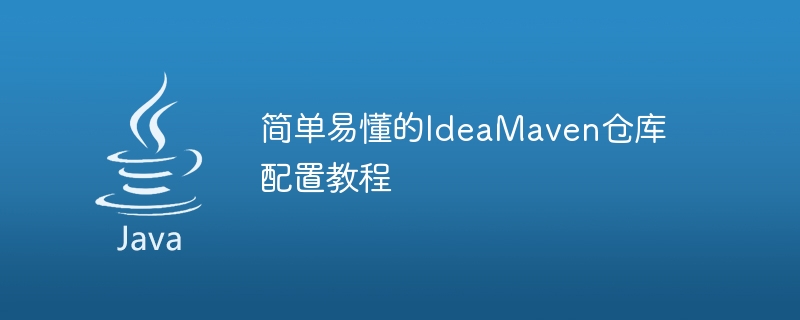

IdeaMaven warehouse configuration tutorial
1. What is the IdeaMaven warehouse?
IdeaMaven repository is a software development tool commonly used by developers, which integrates the Maven project management tool. Maven is a powerful project management tool that can help developers automatically build, manage and release software projects. After configuring relevant information in the IdeaMaven warehouse, you can easily use Maven to manage projects and implement code compilation, packaging, publishing and other operations.
2. How to configure the IdeaMaven warehouse?
First, open the IntelliJ IDEA software. Make sure you have the Maven plugin installed.
Click on the menu bar of IntelliJ IDEA and select File -> Settings -> Build, Execution, Deployment - > Build Tools -> Maven. Enter the Maven installation path in the "Maven home directory" option, for example: "C: pache-maven-3.6.3". Click "OK" to save the configuration.
Create a new Maven project in IntelliJ IDEA. Select File -> New -> Project, select "Maven" as the project type, and then follow the wizard step by step to create the project.
Open the project in IntelliJ IDEA and find the pom.xml file in the project root directory. This is the Maven project configuration file. Add the following configuration in the pom.xml file:
<repositories>
<repository>
<id>central</id>
<url>https://repo.maven.apache.org/maven2</url>
</repository>
</repositories>The above configuration sets the Maven repository as the official central repository. You can also add configurations for other warehouses as needed.
In the pom.xml file, you can add the dependencies required by the project. For example, if you need to use Spring Framework, you can add the following dependencies in the pom.xml file:
<dependencies>
<dependency>
<groupId>org.springframework</groupId>
<artifactId>spring-core</artifactId>
<version>5.2.6.RELEASE</version>
</dependency>
</dependencies>Save the pom.xml file, and Maven will automatically download the required dependencies to the local warehouse.
3. Common Maven commands
After configuring the Maven warehouse, you can use some common Maven commands to manage the project. The following are some common command examples:
Enter the root directory of the Maven project on the command line and run the following command to compile Project:
mvn compile
Run the following command to package the project and generate an executable jar file:
mvn package
If the project is a Java Web project, you can use the following command to start the project:
mvn tomcat7:run
Publish the project to the Maven repository for use by other projects:
mvn deploy
4. Summary
Passed In the above simple and easy-to-understand IdeaMaven warehouse configuration tutorial, you have learned how to configure the IdeaMaven warehouse and use Maven to manage projects. Maven is a powerful project management tool that can help developers develop and deploy projects efficiently. Hope this tutorial helps you!
The above is the detailed content of Simple and easy-to-understand IdeaMaven warehouse configuration tutorial. For more information, please follow other related articles on the PHP Chinese website!
 what does oem mean
what does oem mean
 oracle add trigger method
oracle add trigger method
 How to repair win7 system if it is damaged and cannot be booted
How to repair win7 system if it is damaged and cannot be booted
 The role of server network card
The role of server network card
 Word table spread across pages
Word table spread across pages
 String array assignment method
String array assignment method
 Introduction to the main work content of the backend
Introduction to the main work content of the backend
 What does ts version mean?
What does ts version mean?
 The difference between win10 home version and professional version
The difference between win10 home version and professional version




